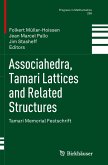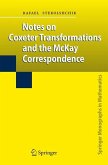In geometry, a Coxeter Dynkin diagram (or Coxeter diagram, Coxeter graph) is a graph with numerically labelled edges representing the spatial relations between a collection of mirrors (or reflecting hyperplanes). It describes a kaleidoscopic construction: each graph node represents a mirror (domain facet) and the label attached to a graph edge encodes the dihedral angle order between two mirrors (on a domain ridge). Each diagram represents a Coxeter group, and Coxeter groups are classified by their associated diagrams. In addition, when used to represent a specific uniform polytope, the diagram has rings (circles) around nodes for active mirrors and hollow nodes (holes) to represent alternation. Dynkin diagrams are closely related objects, which differ from Coxeter diagrams in two respects: firstly, edges labeled "4" or greater are directed, while Coxeter diagrams are undirected; secondly, Dynkin diagrams must satisfy an additional (crystallographic) restriction, namely that the only allowed edge labels are 2, 3, 4, and 6. See Dynkin diagrams for details. Dynkin diagrams correspond to and are used to classify root systems and therefore semisimple Lie algebras.








